Last updated on June 3rd, 2023
Benjamin Franklin is an influential figure in American history. He rose from poverty to become a towering intellectual – credited with scientific discoveries, inventions, political theories, and educational reforms. Some call him The First American because of his early campaigns to unite the colonies. As a Founding Father, he helped define the values that shaped the United States of America. He may have died two centuries ago, but he remains a popular subject of historical fiction, comic books, Broadway musicals, films, video games, and other works of popular culture. Read on to discover 50 facts about Benjamin Franklin.
Facts about Benjamin Franklin’s Early Life and Family
1. Birth
Benjamin Franklin was born in Boston on January 17, 1706, when Massachusetts was still a British colony. He was the 15th of 17 children in a modest family.
2. Father
His father, Josiah Franklin, was an Englishman who worked as a soap and candle maker. He migrated to America with his first wife in 1683, but she died after bearing seven children.
3. Mother
Benjamin Franklin described his mother, Abiah Folger, as a discreet and virtuous woman who molded his values. She also gave him space for creative activities, enabling the development of his fertile mind.
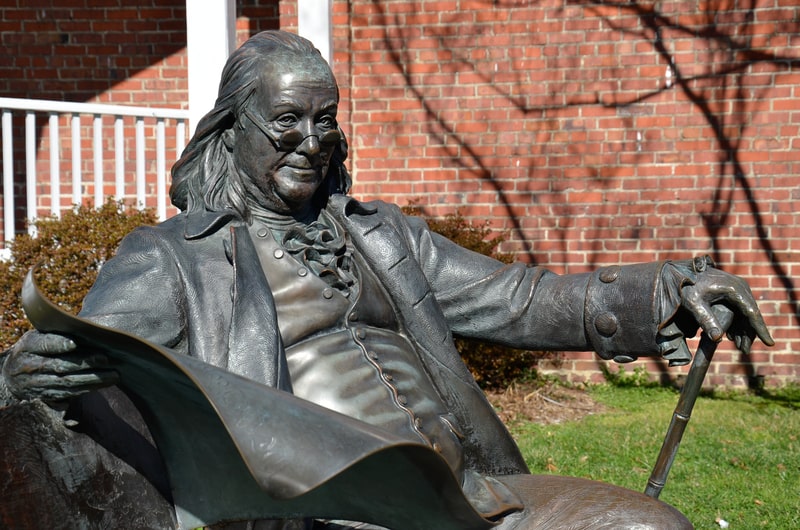
4. Grandfather
His maternal grandfather, Peter Folger, was a clerk of court who defended shopkeepers from wealthy landowners. He went to jail for disobeying the local magistrate. As an interpreter, he promoted harmony between the Europeans and the Native Americans.
5. Education
Benjamin Franklin only had two years of formal education due to a lack of money. He did not graduate from the Boston Latin School but made up for it with voracious reading.
6. Early Work
Young Benjamin was out of school at 10, so he spent his time working for his father. By 12, he was an apprentice printer to his brother, James, who founded a newspaper called The New England Courant three years later.
7. Advocacy
In 1722, James went to jail for publishing an article against the governor. Benjamin took over the business. He published letters under a pseudonym, Mrs. Dogood, to advocate for free speech.
8. Fresh Start
At 17, he ran away to Philadelphia and worked in various printing shops. Franklin proposed to Deborah Read while boarding in her home. However, the governor sent him to London on an errand yet failed to provide financial support, preventing his return.
9. Consequences
The absence forced Deborah to marry another man, John Rodgers. However, Rodgers ran away with her dowry to avoid his debts. Left behind, she could not remarry due to bigamy laws.
10. Family
Franklin returned in 1726. To avoid legal issues, he established a common-law marriage with Deborah in 1730. They raised his illegitimate son, William, with their two children: Francis and Sarah.
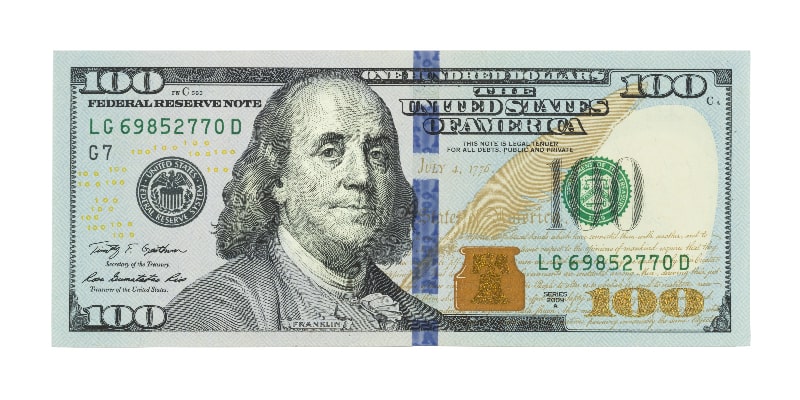
Facts about Benjamin Franklin, the Publisher
11. Return to Printing
When his merchant boss died in 1728, Franklin set up a printing house and published The Pennsylvania Gazette. The newspaper was a platform to voice ideas and observations, earning him widespread respect.
12. The Busy-Body Series
In 1729, he attempted to suppress his rival by writing an entertaining column on the vices and follies of Americans. It became a hit. The competition eventually folded and sold his newspaper for a small amount.
13. First Newspaper Chain
Benjamin Franklin was not content with one local paper. He established a chain of partnerships stretching from the Carolinas to New England. By 1753, he controlled 8 of the 15 English-language newspapers in the colonies.
14. Influence
Aside from strengthening the business, creating the chain also allowed him to influence minds across colonial America. He used it to promote unity, encourage debate, and foster patriotism. Unfortunately, the network broke down during the revolution.
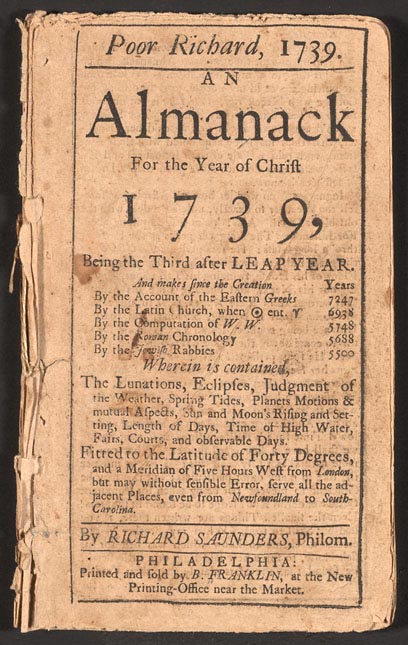
15. A Popular Author
In 1733, Benjamin Franklin started to publish Poor Richard’s Almanack under the name Richard Saunders. His writings on folk wisdom resonated with the masses, resulting in over ten thousand copies sold annually.
Facts about Benjamin Franklin, the Scientist
16. A Gentleman of Leisure
Benjamin Franklin became wealthy thanks to his print shop, published books, and land speculation. He unofficially retired at 42 and devoted the rest of his life to studying science and delving into public service.
17. Conservation of Charge
Franklin coined the terms positive and negative to refer to electric charges. He also discovered charge conservation, a principle stating that the total electric charge in an isolated system never changes.
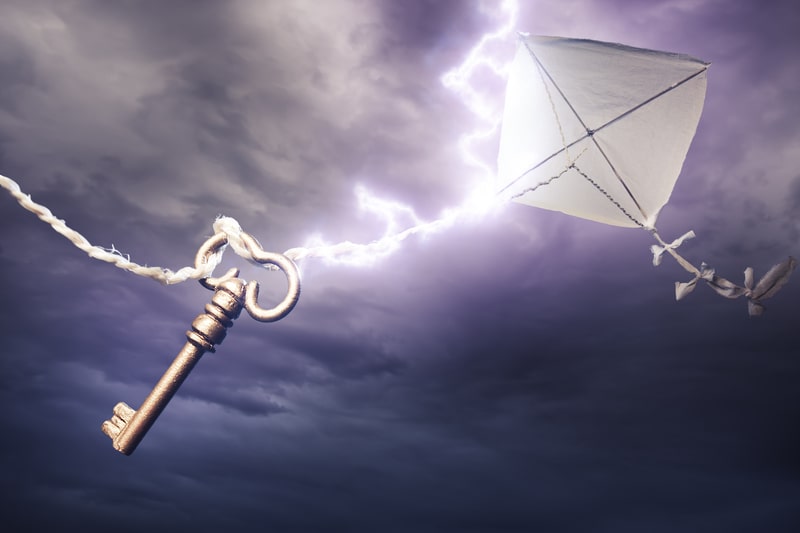
18. The Kite Experiment
The iconic image of Franklin flying a kite during a storm is an experiment he devised to prove that lightning is electricity. It was a success. Franklin extracted sparks from a cloud using a conductive wire and a wet string.
19. The Lightning Rod
Franklin observed that conductors with sharp points discharged silently across a greater distance than those with smooth ends. He invented the lightning rod to protect buildings from dangerous strikes, conducting experiments on his own house.
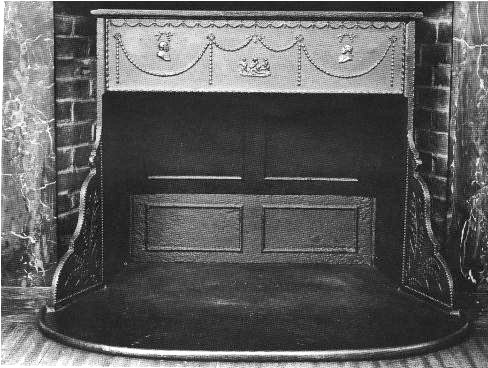
20. The Franklin Stove
In 1742, Benjamin Franklin invented a metal-lined fireplace with a rear hollow baffle. The design produced more heat with less smoke compared to regular models. The Franklin stove is also called the circulating stove and the Pennsylvania fireplace.
21. Bifocals
Bifocal eyeglasses have two areas of different magnification. Franklin invented bifocals by sawing his lenses in half. It helped him read lips at court – the only way he could understand French speakers.
22. Flexible Urinary Catheter
Benjamin Franklin wanted to improve the design of the urinary catheter after seeing his brother go through painful stone removal. With the help of a silversmith, he replaced the long rigid metal tube with flexible hinged segments for ease of use.
23. The Glass Harmonica
Franklin saw English musicians make sweet melodies by passing their fingers around water-filled glasses. In 1761, he designed a musical instrument called the glass harmonica to replicate the music more conveniently. It is his personal favorite among all his inventions.
24. Charting the Gulf Stream
As deputy postmaster, Franklin investigated why British packet ships were so slow. The culprit: a strong current he named the Gulf Stream. He charted it to help in navigation and cut sailing time by two weeks.
25. Population Studies
In the 1730s, Franklin started observing population growth and found that America had the highest rate among all countries. Doubling every 20 years, he predicted it would surpass England in a century.
Facts about Benjamin Franklin’s Personal Views
26. Religion
Benjamin Franklin grew up in a Puritan household. Although he felt organized religion was necessary to maintain harmony among men, he rarely attended religious services in adulthood. He called himself a deist and a Christian.
27. Doing Good
Franklin often read the book Bonifacious: Essays to Do Good written by the Puritan preacher Cotton Mather. It emphasized the importance of forming associations that benefit society, influencing his choices throughout life.
28. Egalitarian Democracy
Puritans rejected the hierarchy that divided society into the king, the aristocracy, and the commoners. They preached that all men are equal. Franklin weaved this notion of an egalitarian democracy into American culture.
29. Religious Tolerance
Benjamin Franklin respected and promoted all churches. He rejected dogma and doctrine, instead stressing ethics, morality, and civic virtue. His unwavering tolerance helped ensure religious freedom in the United States.
30. The Great Seal
In 1776, the U.S. Congress appointed Franklin, Jefferson, and Adams to design a Great Seal for the United States. He proposed the motto: Rebellion to tyrants is obedience to God.
31. Thirteen Virtues
At 20, Franklin began to develop his character by practicing 13 virtues: temperance, silence, order, frugality, resolution, sincerity, industry, justice, moderation, tranquility, cleanliness, chastity, and humility. Although he often fell short, he believed the attempt made him a better man.
32. Slavery
Benjamin Franklin owned seven slaves, with some working in his home and his shop. Later in life, he became a vocal critic of slavery. He wanted to abolish the practice and open schools for black slaves.
33. Vegetarianism
As a teenager, Franklin came across a book on vegetarianism. He initially tried it to save money on food and buy more books. Franklin also cited ethical reasons and clarity of mind for avoiding meat consumption.
34. Temptations
Franklin was not immune to temptations. He began to eat fish and tried to justify it through admittedly faulty arguments. He explored meat alternatives and stumbled on tofu, which he attempted to produce from soybeans.
35. Inoculation
An African slave named Onesimus introduced variolation as a means to prevent smallpox. Benjamin Franklin supported the procedure but could not provide it in time to his son. He advised parents not to make the same mistake.
Facts about Benjamin Franklin’s Interests
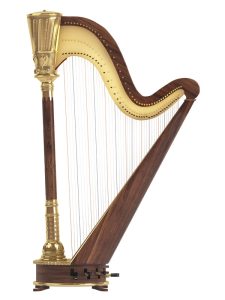
36. Musical Instruments
With endless free time, Franklin could play instruments and compose music in the classical style. He was partial to string instruments such as the guitar, the harp, and the violin.
37. Famous Fans
Musicians admired Franklin and his enlightened ideas. Mozart and Beethoven composed music for the glass harmonica he invented. Many acquired the instrument for their collection, including Austrian composer Joseph Haydn.
. . . continue reading on the next page
